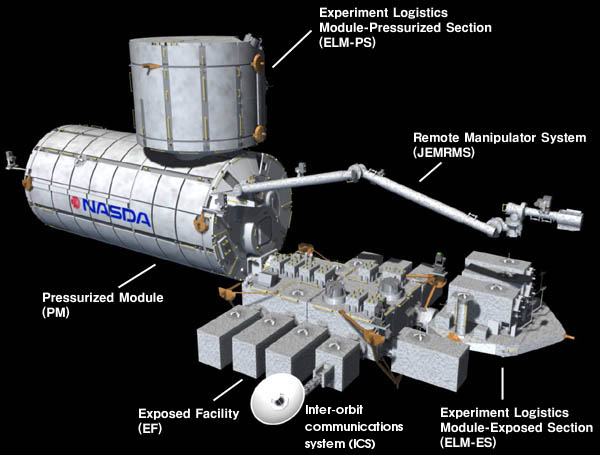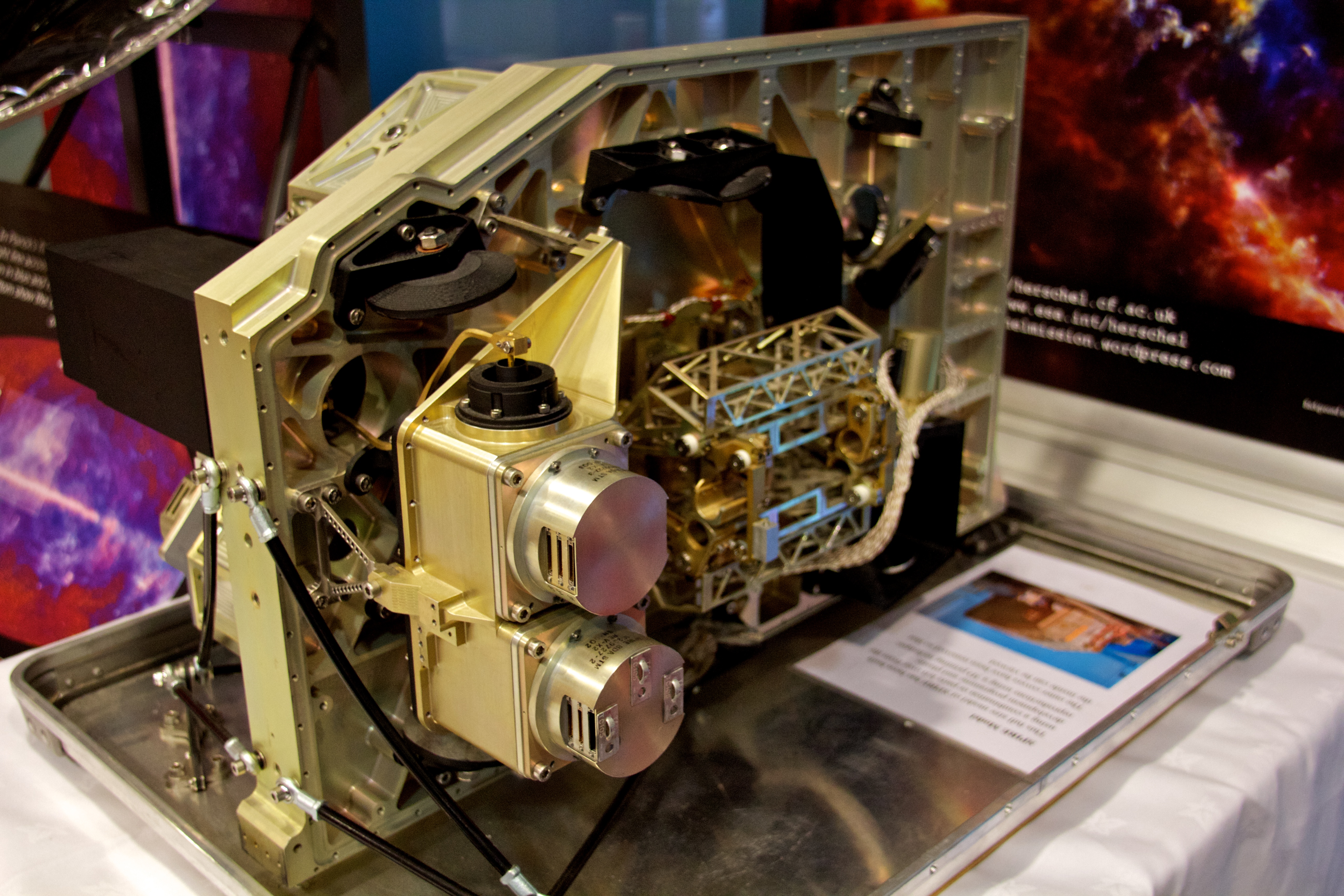|
SPICA (satellite)
The Space Infrared Telescope for Cosmology and Astrophysics (SPICA), was a proposed infrared space telescope, follow-on to the successful Akari space observatory. It was a collaboration between European and Japanese scientists, which was selected in May 2018 by the European Space Agency (ESA) as a finalist for the next Medium class Mission 5 of the Cosmic Vision programme, to launch in 2032. At the time the other two finalists were THESEUS and EnVision, with the latter that was eventually selected for further development. SPICA would have improved on the spectral line sensitivity of previous missions, the Spitzer and Herschel space telescopes, between 30 and 230 µm by a factor of 50—100. A final decision was expected in 2021, but in October 2020, it was announced that SPICA was no longer being considered as a candidate for the M5 mission. History In Japan, SPICA was first proposed in 2007, initially called HII-L2 after the launch vehicle and orbit, as a large Strat ... [...More Info...] [...Related Items...] OR: [Wikipedia] [Google] [Baidu] |
Infrared Astronomy
Infrared astronomy is a sub-discipline of astronomy which specializes in the observation and analysis of astronomical objects using infrared (IR) radiation. The wavelength of infrared light ranges from 0.75 to 300 micrometers, and falls in between visible radiation, which ranges from 380 to 750 nanometers, and submillimeter waves. Infrared astronomy began in the 1830s, a few decades after the discovery of infrared light by William Herschel in 1800. Early progress was limited, and it was not until the early 20th century that conclusive detections of astronomical objects other than the Sun and Moon were made in infrared light. After a number of discoveries were made in the 1950s and 1960s in radio astronomy, astronomers realized the information available outside the visible wavelength range, and modern infrared astronomy was established. Infrared and optical astronomy are often practiced using the same telescopes, as the same mirrors or lenses are usually effective over a wavelengt ... [...More Info...] [...Related Items...] OR: [Wikipedia] [Google] [Baidu] |
Cosmic Vision
Cosmic Vision is the third campaign of space science and space exploration missions in the Science Programme of the European Space Agency (ESA). Formulated in 2005 as ''Cosmic Vision: Space Science for Europe 2015–2025'', the campaign succeeded the Horizon 2000 Plus campaign and envisioned a number of missions in the fields of astronomy and solar system exploration beyond 2015. Ten missions across four funding categories are planned to be launched under Cosmic Vision, with the first being CHEOPS in December 2019. A mission to the Galilean moons (JUICE), the first deep space mission with an opportunistic target ( Comet Interceptor), and one of the first gravitational-wave space observatories (LISA), are planned for launch as part of the Cosmic Vision campaign. History The initial call of ideas and concepts was launched in 2004 with a subsequent workshop held in Paris to define more fully the themes of the Vision under the broader headings of Astronomy and Astrophysics, So ... [...More Info...] [...Related Items...] OR: [Wikipedia] [Google] [Baidu] |
Coronograph
A coronagraph is a telescopic attachment designed to block out the direct light from a star so that nearby objects – which otherwise would be hidden in the star's bright glare – can be resolved. Most coronagraphs are intended to view the corona of the Sun, but a new class of conceptually similar instruments (called ''stellar coronagraphs'' to distinguish them from ''solar coronagraphs'') are being used to find extrasolar planets and circumstellar disks around nearby stars as well as host galaxies in quasars and other similar objects with active galactic nuclei (AGN). Invention The coronagraph was introduced in 1931 by the French astronomer Bernard Lyot; since then, coronagraphs have been used at many solar observatories. Coronagraphs operating within Earth's atmosphere suffer from scattered light in the sky itself, due primarily to Rayleigh scattering of sunlight in the upper atmosphere. At view angles close to the Sun, the sky is much brighter than the background co ... [...More Info...] [...Related Items...] OR: [Wikipedia] [Google] [Baidu] |
Exoplanets
An exoplanet or extrasolar planet is a planet outside the Solar System. The first possible evidence of an exoplanet was noted in 1917 but was not recognized as such. The first confirmation of detection occurred in 1992. A different planet, initially detected in 1988, was confirmed in 2003. There are many methods of detecting exoplanets. Transit photometry and Doppler spectroscopy have found the most, but these methods suffer from a clear observational bias favoring the detection of planets near the star; thus, 85% of the exoplanets detected are inside the tidal locking zone. In several cases, multiple planets have been observed around a star. About 1 in 5 Sun-like starsFor the purpose of this 1 in 5 statistic, "Sun-like" means G-type star. Data for Sun-like stars was not available so this statistic is an extrapolation from data about K-type stars. have an "Earth-sized"For the purpose of this 1 in 5 statistic, Earth-sized means 1–2 Earth radii. planet in the habitable zone. ... [...More Info...] [...Related Items...] OR: [Wikipedia] [Google] [Baidu] |
Protoplanetary Disc
A protoplanetary disk is a rotating circumstellar disc of dense gas and dust surrounding a young newly formed star, a T Tauri star, or Herbig Ae/Be star. The protoplanetary disk may also be considered an accretion disk for the star itself, because gases or other material may be falling from the inner edge of the disk onto the surface of the star. This process should not be confused with the accretion process thought to build up the planets themselves. Externally illuminated photo-evaporating protoplanetary disks are called proplyds. Formation Protostars form from molecular clouds consisting primarily of molecular hydrogen. When a portion of a molecular cloud reaches a critical size, mass, or density, it begins to collapse under its own gravity. As this collapsing cloud, called a solar nebula, becomes denser, random gas motions originally present in the cloud average out in favor of the direction of the nebula's net angular momentum. Conservation of angular momentum causes t ... [...More Info...] [...Related Items...] OR: [Wikipedia] [Google] [Baidu] |
Galaxy
A galaxy is a system of stars, stellar remnants, interstellar gas, dust, dark matter, bound together by gravity. The word is derived from the Greek ' (), literally 'milky', a reference to the Milky Way galaxy that contains the Solar System. Galaxies, averaging an estimated 100 million stars, range in size from dwarfs with less than a hundred million stars, to the largest galaxies known – supergiants with one hundred trillion stars, each orbiting its galaxy's center of mass. Most of the mass in a typical galaxy is in the form of dark matter, with only a few percent of that mass visible in the form of stars and nebulae. Supermassive black holes are a common feature at the centres of galaxies. Galaxies are categorized according to their visual morphology as elliptical, spiral, or irregular. Many are thought to have supermassive black holes at their centers. The Milky Way's central black hole, known as Sagittarius A*, has a mass four million times greater than the Sun. As o ... [...More Info...] [...Related Items...] OR: [Wikipedia] [Google] [Baidu] |
Stellar Nursery
Star formation is the process by which dense regions within molecular clouds in The "medium" is present further soon.-->interstellar space, sometimes referred to as "stellar nurseries" or "-forming regions", and form s. As a branch of , star formation includes the study of the |
Planetary Formation
The nebular hypothesis is the most widely accepted model in the field of cosmogony to explain the formation and evolution of the Solar System (as well as other planetary systems). It suggests the Solar System is formed from gas and dust orbiting the Sun. The theory was developed by Immanuel Kant and published in his ''Universal Natural History and Theory of the Heavens'' (1755) and then modified in 1796 by Pierre Laplace. Originally applied to the Solar System, the process of planetary system formation is now thought to be at work throughout the universe. The widely accepted modern variant of the nebular theory is the solar nebular disk model (SNDM) or solar nebular model. It offered explanations for a variety of properties of the Solar System, including the nearly circular and coplanar orbits of the planets, and their motion in the same direction as the Sun's rotation. Some elements of the original nebular theory are echoed in modern theories of planetary formation, but most ele ... [...More Info...] [...Related Items...] OR: [Wikipedia] [Google] [Baidu] |
Star Formation
Star formation is the process by which dense regions within molecular clouds in The "medium" is present further soon.-->interstellar space, sometimes referred to as "stellar nurseries" or "-forming regions", and form s. As a branch of , star formation includes the study of the |
Silicon Carbide
Silicon carbide (SiC), also known as carborundum (), is a hard chemical compound containing silicon and carbon. A semiconductor, it occurs in nature as the extremely rare mineral moissanite, but has been mass-produced as a powder and crystal since 1893 for use as an abrasive. Grains of silicon carbide can be bonded together by sintering to form very hard ceramics that are widely used in applications requiring high endurance, such as car brakes, car clutches and ceramic plates in bulletproof vests. Large single crystals of silicon carbide can be grown by the Lely method and they can be cut into gems known as synthetic moissanite. Electronic applications of silicon carbide such as light-emitting diodes (LEDs) and Cat's whisker detector, detectors in early radios were first demonstrated around 1907. SiC is used in semiconductor electronics devices that operate at high temperatures or high voltages, or both. Natural occurrence Naturally occurring moissanite is found in only minut ... [...More Info...] [...Related Items...] OR: [Wikipedia] [Google] [Baidu] |
Japan Aerospace Exploration Agency
The is the Japanese national air and space agency. Through the merger of three previously independent organizations, JAXA was formed on 1 October 2003. JAXA is responsible for research, technology development and launch of satellites into orbit, and is involved in many more advanced missions such as asteroid exploration and possible human exploration of the Moon. Its motto is ''One JAXA'' and its corporate slogan is ''Explore to Realize'' (formerly ''Reaching for the skies, exploring space''). History On 1 October 2003, three organizations were merged to form the new JAXA: Japan's Institute of Space and Astronautical Science (ISAS), the National Aerospace Laboratory of Japan (NAL), and National Space Development Agency of Japan (NASDA). JAXA was formed as an Independent Administrative Institution administered by the Ministry of Education, Culture, Sports, Science and Technology (MEXT) and the Ministry of Internal Affairs and Communications (MIC). Before the merger, ISA ... [...More Info...] [...Related Items...] OR: [Wikipedia] [Google] [Baidu] |
Herschel Space Observatory
The Herschel Space Observatory was a space observatory built and operated by the European Space Agency (ESA). It was active from 2009 to 2013, and was the largest infrared telescope ever launched until the launch of the James Webb Space Telescope in 2021. Herschel carries a mirror and instruments sensitive to the far infrared and submillimetre wavebands (55–672 µm). Herschel was the fourth and final cornerstone mission in the Horizon 2000 programme, following ''SOHO''/'' Cluster II'', ''XMM-Newton'' and ''Rosetta''. The observatory was carried into orbit by an Ariane 5 in May 2009, reaching the second Lagrangian point (L2) of the Earth–Sun system, from Earth, about two months later. Herschel is named after Sir William Herschel, the discoverer of the infrared spectrum and planet Uranus, and his sister and collaborator Caroline Herschel. The observatory was capable of seeing the coldest and dustiest objects in space; for example, cool cocoons where stars form and ... [...More Info...] [...Related Items...] OR: [Wikipedia] [Google] [Baidu] |










